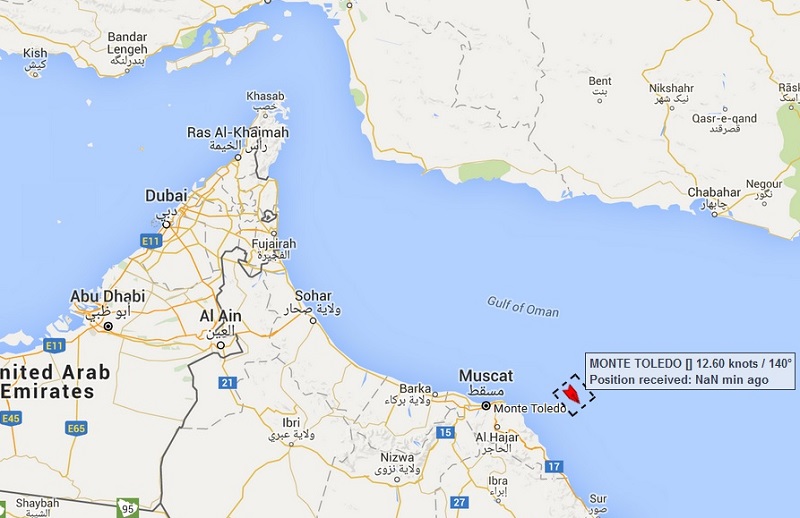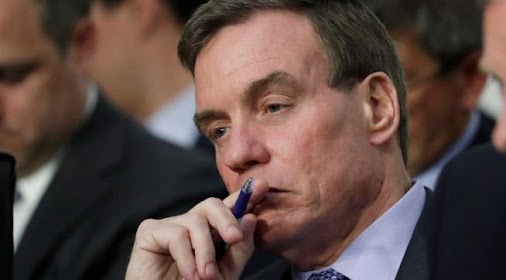America and Russia 'agree' Syria ceasefire deal
- Get link
- Other Apps
ITV News |
America and Russia 'agree' Syria ceasefire deal
ITV News America and Russia have reached a principle agreement to cease hostilities between various sides involved in the Syria conflict, according to Secretary of State John Kerry. Mr Kerry expects Barack Obama and Vladimir Putin to speak in the coming days to ... Kerry Reaches 'Provisional Accord' With Russia On Syria TruceRadioFreeEurope/RadioLiberty all 103 news articles » |
Former NSA contractor tells supporters he would present public interest defence if he appeared before American jury
Edward Snowden has told supporters he would be willing to return to the US if the government could guarantee a fair trial.
The former National Security Agency contractor, who has been living in Russia since June 2013, said he would present a public interest defence of his decision to leak thousands of classified intelligence documents if he appeared before a US jury. “I’ve told the government I would return if they would guarantee a fair trial where I can make a public interest defence of why this was done and allow a jury to decide,” Snowden told the libertarian conference, the New Hampshire Liberty Forum.
Continue reading...
In Soviet Times, People Were Afraid to Say They Were Religious; Now, They’re Afraid Not to, Expert Saysby paul goble (noreply@blogger.com)
Paul Goble
Staunton, February 21 – Elena Kublitskaya, a senior specialist on religion at the Moscow Institute for Social-Political Research, says that one must treat polls on the religious identification of Russians with skepticism because in Soviet times, people were afraid to say they were religious while now they are often afraid to say that they aren’t.
In an interview in “Moskovsky komsomolets,” she says that she found but was unable to publish that the level of religious faith among Soviet citizens was significantly higher than the authorities believed – about 35 percent in Moscow and “approximately 70-80 percent” in Central Asia (mk.ru/social/2016/02/10/sociologi-rasshifrovali-religioznyy-kod-rossiyanina.html).
Soviet officials were often upset by her findings. The Tajikistan leadership, for example, wanted to know why she had found that “among communists” in that Central Asian republic, “40 percent were believers, and among Komsomol members, 70 percent were.” But Soviet officials were even more angry when she reported that the most educated were often the most religious.
The situation today, she says, is “precisely the opposite.” Russians routinely claim to be religious because they are afraid not to. “Many atheists [in fact] try not to advertise their convictions and often hide their position by telling sociologists that they find it ‘difficult to answer’” questions about religion.
After rising rapidly in the 1990s, the growth in genuine religiosity has levelled off, at least in Moscow. Today, the ratio of the religious and non-religious segments of the population is six to one in the Russian capital, three to one in Russia as a whole, four to one in the Southern and Volga Federal districts, and one to one in the Far East.
But if more people are saying they are religious, Kublitskaya says, they are not taking part in religious activities. Instead, the number doing so is falling. In Moscow, 45 percent of those identifying as religious attended some religious services; but as of last year, the share of those doing so “did not exceed 30 percent.”
Asked to describe the typical believer in the capital, the scholar says that “this is a woman aged 50 to 59, a non-indigenous Muscovite, with middle specialized education, an employee or pensioner with a middle level of material well-being.”
The typical Orthodox Muscovite, Kublitskaya says, is likely to be “a native Muscovite, an ethnic Russian over the age of 30 with incomplete middle, middle specialized or professional education” and to be an employee or member of the intelligentsia or a pensioner.
The typical Muslim Muscovite, she continues, is likely to be “a young man aged 25 to 29 with middle specialized or incomplete higher education, a worker or entrepreneur, and to have an average income and to be non-indigenous to the city.
And the typical non-believing Muscovite is likely to be “an indigenous Muscovite, an ethnic Russian aged 18 to 29, with incomplete higher or higher education, from engineering and technical workers and students, with an average level of material income.” This group as almost doubled in number over the last five years, from 10 to 17 percent of the total.
Many atheists and unbelievers nonetheless identify as Orthodox because they view that as a political identity, and as ever more do so, that has the effect of pushing up the number who declare themselves to be believers in Orthodoxy or Islam as ever more people view religion as a marker of nationality, Kublitskaya points out.
Russians continue to have a high regard for the Orthodox church, but the share of them who believe that the church and religious institutions generally are playing a positive role has been falling, from 43 percent in 2010 to “only 32 percent” last year, a trend that seems likely to continue.
And Kublitskaya points out that “however strange it may seem and despite the fact that trust in the Church as a social institution continues to remain high, nevertheless the orientation of the population toward religion as an all-national idea capable of uniting Russians does not find significant support.”
Indeed, she concludes, “only the Muslims (32 percent) identify religion as a unifying idea and religious traditions at a higher level. Only 13 percent of Orthodox view religion as a consolidating force.”
Read the whole story
· · ·
Designer of Lenin’s Mausoleum was Orthodox Christian, Architectural Historian Says by paul goble (noreply@blogger.com)
Paul Goble
Staunton, February 21 – In what may constitute a last-ditch defense of keeping Lenin in the mausoleum on Red Square, a Russian architectural historian points out that the man who designed that building was an Orthodox Christian who before the revolution had served as chief architect of the Holy Synod of the Russian Orthodox Church.
Elena Ovsyannikova, a professor of architectural history at the Moscow Institute of Architecture, notes that Aleksey Shchusev infused his design with numerous Christian elements and thus laid the foundation for the quasi-religious cult of Lenin and then of Stalin in Soviet times (postnauka.ru/faq/59649).
But at the same time, she says that his design reflected many other influences as well, including the European art deco movement and funerary practices extending back to the Egyptian pyramids. At the same time, however, she dismisses as an absurdity the notion that Lenin’s mausoleum has anything in common with the Babylonian ziggurat, as many think.
Of course, Ovsyannikova continues, “in formally plastic terms, the Mausoleum of Lenin doesn’t resemble a church.” Rather it was “an innovative composition” fully in the spirit of the Russian and European avant-garde “which Shchusev knew well” and in which he had worked. “But Shchusev also had built a multitude of churches, many of them glorious.”
Consequently, she says, “the memorial character of the building and the sarcophagus of Lenin turns us to religious forms. This is the Orthodox and general Christian tradition of respect for remains and their inclusion in a sarcophagus. In a certain sense, the mummies of the pharaohs also are remains.”
And “therefore with all its architectural innovation, the history of the Lenin Mausoleum goes back into the depths of history.”
The Soviet leadership, the architectural historian notes, put restrictions on Shchusev: he could build the mausoleum only with stone mined in the USSR. And it also modified his design: he wanted the building to have many anterooms, but the authorities decided to keep it smaller and simpler than he had planned.
Read the whole story
· ·
International Business Times |
John Kerry Reaches Provisional Agreement With Russia's Lavrov on Syria Ceasefire
International Business Times Kerry lavrov (2) U.S. Secretary of State John Kerry said he and his Russian counterpart Sergei Lavrov had reached a provisional ceasefire deal for Syria. Pictured: Lavrov (left) speaks with Kerry (right) during a meeting in Moscow, Russia, Dec. 15, 2015. America and Russia 'agree' Syria ceasefire dealITV News US, Russia reach 'provisional agreement' on Syria cease-fireThe Week Magazine Kerry Reaches 'Provisional Accord' With Russia On Syria TruceRadioFreeEurope/RadioLiberty Haaretz all 255 news articles » |
Iranian oil En Route To Europe and Russiaby therearenosunglasses
 Total chartered the VLCC Atlantas—marinetraffic.com
Total chartered the VLCC Atlantas—marinetraffic.comIran sends first oil shipment to Europe since sanctions end
By ANTHONY DIPAOLA, HASHEM KALANTARI
TEHRAN, Iran (Bloomberg) — Iran loaded its first cargo of oil to Europe since international sanctions ended, signaling more supplies will add to the global glut of crude.
A tanker for France’s Total was being loaded at Kharg Port while vessels chartered for Chinese and Spanish companies were due to arrive later Sunday, an Iranian oil ministry official said. A tanker hired by a Russian company hadn’t arrived, and was still expected, the official said. The official didn’t identify the companies that had hired the other three tankers and didn’t name the vessels. Total declined to comment.
Iran is trying to rebuild its oil production after sanctions were lifted in January, with plans to boost output and exports by 1 MMbpd this year. Supply deals were signed with Total and Hellenic Petroleum SA of Greece. Oil prices have dropped 11% this year, partly on anticipation of the increased supplies.
Iran is planning three initial shipments to Europe carrying 4 MMbbl of oil with 2 MMbbl going to Total and the rest to companies from Spain and Russia, Roknoddin Javadi, managing director of National Iranian Oil Co., said on Saturday, according to the Iranian oil ministry’s news service Shana.
Total, Spanish refiner Compania Espanola de Petroleos and Russia’s Lukoil PJSC all booked cargoes of Iranian crude to sail from Kharg Island to European ports, according to shipping reports compiled by Bloomberg earlier this month. The vessels included one very large crude carrier, a tanker capable of carrying 2 MMbbl of crude, and two smaller Suezmax-sized vessels with capacity of about 1 MMbbl each.
 Lukoil’s trading unit Litasco booked the Distya Akula—(vesselfinder.com), according to fixture data compiled by Bloomberg. The Atlantas is scheduled to head for European ports, the Monte Toledo for Spain and the Distya Akula for Constantza, Romania, the data show. No one answered a phone call to Litasco’s office in Geneva on Sunday.
Lukoil’s trading unit Litasco booked the Distya Akula—(vesselfinder.com), according to fixture data compiled by Bloomberg. The Atlantas is scheduled to head for European ports, the Monte Toledo for Spain and the Distya Akula for Constantza, Romania, the data show. No one answered a phone call to Litasco’s office in Geneva on Sunday.
“The loading operation of the three tankers at Kharg terminals will be done within 48 hours,” Pirouz Mousavi, managing director of Iran Oil Terminals Co., told semi-official Mehr news agency on Sunday. The company hasn’t loaded tankers for Europe in four years because of sanctions, he said.
Read the whole story
· · · · · ·
Next Page of Stories
Loading...
Page 2
Council on Foreign Relations (blog) |
Evaluating Michael Hayden's Defense of CIA Drone Strikes
Council on Foreign Relations (blog) Former director of the Central Intelligence Agency (CIA) Gen. Michael Hayden has an op-ed in today's New York Times: “To Keep America Safe, Embrace Drone Warfare.” The two-thousand-word piece provides some unique insights into the process by which ... |
Those of us watching Afghanistan were not surprised at the findings of the most recent annual reportby the UN Assistance Mission in Afghanistan (UNAMA) in cooperation with the UN Human Rights Office on the "Protection of Civilians in Armed Conflict."
Overshadowed by the violence in Syria, news from Afghanistan rarely makes headlines unless it is a reminder of the dire situation there.
The 11,002 documented civilian casualties (3,545 deaths and 7,457 injured) might be a record high for Afghanistan since 2009 (when the UN started its documentation), but the total is dwarfed by the 20,000 killed in the Syrian war. Then again, there is little bombing in Afghanistan, where air operations account for only 3 percent of all dead and wounded, meaning that nearly all civilian casualties are caused by up-close-and personal brute force.
Similarly, even if there is currently no Afghan mass exodus as there is from Syria, Afghans still rank second-highest among asylum seekers and refugees in the world, and the war is in its fourth decade.
Ignoring wars does not make them go away. Nor does simply drawing down international military forces. This is what NATO did in Afghanistan at the end of 2014, when the UN -mandated International Security Assistance Force (ISAF) closed its doors, and with that most international military forces left. Not all foreign soldiers left. Australia and the United States are still contributing nations as NATO launched its Resolute Support Mission (RSM), which focuses on providing “training, advice and assistance activities at the security ministries and national institutional levels and the higher levels of army and police command across the country.” Planned initially for a year, it was quietly extended after the Taliban insurgency managed to briefly conquer the Northern city of Kunduz late last year.
But lets return to the UN report. What does it tells us and, more importantly, what does it not?
Things in the UN Report That Should not Surprise Us
First, wars kill, and as a war intensifies (as it did in Afghanistan), the toll on civilians increases, especially when the rules of war mean little to the fighting parties. Though Afghan President Ashraf Ghani was quick to point a finger at the Taliban for violating international law, arguing that his security forces “underwent regular training to ensure the protection of civilians and were liable to investigate if any breaches occurred,” the UN report shows there are violations on both sides, even if the Taliban might be the biggest perpetrator.
What happened in the northern city of Kunduz was a stark reminder that at least some within the Afghan security forces and government do not mind collateral damage if it means defeating the Taliban.
Trending Offers and Articles
Second, as it has numerous times before, the Taliban slammed the UN report as biased propaganda by foreign invaders and an Afghan puppet government. Of course the Taliban's rather narrow definition of “civilians” makes it easy for them to claim the moral high ground on not killing the innocent. For the Taliban, anybody associated with or working for the Afghan Government in any form or fashion is a legitimate target, whether they carry weapons or not. Increasingly, however, the Afghan population no longer buys this convenient excuse and views the Taliban as what it is: a brutal insurgent force.
Third, ISAF/NATO clearly did not complete its mission, defined as creating “the conditions whereby the Afghan government would be able to exercise its authority throughout the country, including the development of professional and capable Afghan security forces.” The UNAMA report—and of course what happened in Kunduz—shows clearly that the ANSF is outgunned and unable to halt an ever-expanding and ever-fragmenting insurgency. So perhaps withdrawal was premature and the international military should have heeded the lessons of Iraq.
Fourth, the departure of foreign military forces did not appease the Taliban (which had made this one of its conditions), but gave it greater ability to fight ANSF in ground engagements, which have accounted for 37 percent of all civilian casualties.
In the past, improvised explosive devises were the highest killer of civilians. Without international air power backing up ANSF, the Taliban is free to move in bigger groups, engage into close combat, and terrorize urban centers such as Kunduz and Kabul. Kate Clark from the Afghanistan Analysts Network points out the obvious: the war has flipped. It is now “the Taliban driving the conflict, with the ANSF largely trying to defend territory.”
The increasing intensity of ground combat, combined with a further 38 percent civilian casualties attributed to IEDs and suicide attacks, also explains why the toll has been so high on women and children.
All these “tactics” are more or less indiscriminate. And this is what we need to be afraid of with the Taliban pressing into cities, as it is urban centers where rural populations flee to in order to escape the Taliban. If there is no assistance or protection in cities, Afghans will seek security in neighboring countries or abroad. If Europe is opening doors to Syrians, why not to Afghans?
Things the Report Leaves Out
Read the whole story
· · ·
Russia Pulls Back From Cooperating With US on Afghanistan
New York Times-11 hours ago
KABUL, Afghanistan — For all the conflicts in the world in which Washington is at odds with Moscow, the deteriorating security situation in ...
How IS has been making enemies in Afghanistan
BBC News-13 hours ago
- Get link
- Other Apps





Comments
Post a Comment